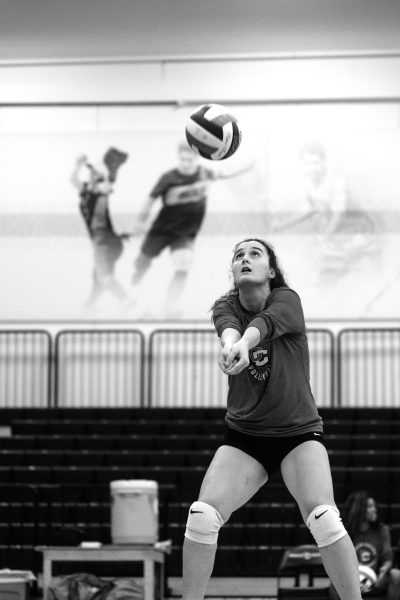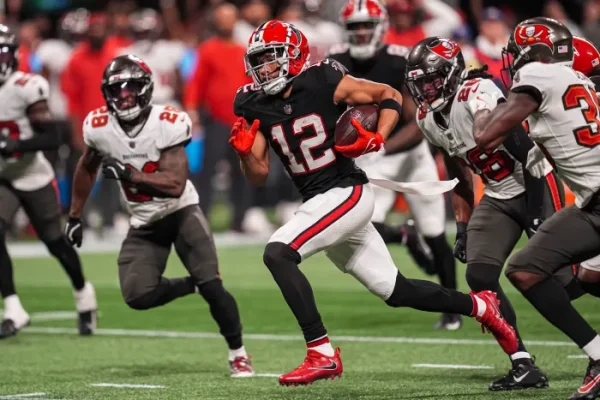Fantasy Football Advice From Your Friendly Neighborhood Obies
The 2020 NFL season is finally here, meaning that fans can get back to their favorite fall pastime: fantasy football. A significant number of Oberlin students are creating their own fantasy leagues to have fun and stay connected to friends and family. The competition is thrilling, but finding ways to gain an edge can also be challenging and time-consuming.
If you’re one of many students who is new to fantasy football and looking to learn the ropes, or if you’re a veteran looking for ways to sharpen your team management skills, you’ve come to the right place. Here are some tips to help your fantasy team win this year, from some of the College’s top-tier fantasy players.
DO YOUR RESEARCH
College fourth-year and commissioner of the Varsity Baseball team’s fantasy football league Ben Reed feels there is an obvious first step any fantasy football player should take to optimize their draft picks and line-up.
“Understanding your league rules and how you can find value in different positions is crucial,” Reed said.
The scoring rules your league uses make all the difference in determining how much value you should allocate to each position when drafting, so be very mindful of what scoring style your league is using. Almost all leagues use either standard scoring or Points Per Reception scoring, so make sure you know which one your league uses and if there are any specific variations your commissioner made to the format.
Beyond the rules of your league, doing research on players and games throughout the season is incredibly important. According to College third-year and varsity football player Christian Arnold, this is the one of the best ways to give yourself an edge.
“If you’re trying to improve your team and take fantasy seriously, you’re going to want to make sure you can watch all of the NFL games and stay up-to-date with who is doing well [and poorly] as well as those who have injuries,” Arnold said. “Each year there’s going to be sleepers … so be mindful that they could possibly help your team out a lot.”
Identifying sleepers, or players who overperform from their projected stat lines, are crucial to fantasy football glory. Keeping a close eye on injured players on a week-to-week basis is also especially important, because if a starter ends up with an injury his backup’s value will immediately go up, as a result of an expected increase in playing time. Post-draft, this is the best way to find an underrated or sleeper pick.
USE THE WAIVER WIRE
While drafting a strong lineup is the easiest way to fantasy football success, oftentimes players who aren’t drafted can have an even bigger impact. The waiver wire is composed of players who were not selected in the draft. Fantasy football players can add players from the waiver wire by dropping players already on their team. Using the waiver wire during the season can be risky, but the risk can often be well worth the reward. College third-year and varsity baseball player David Fineman points out that using the waiver wire to claim undrafted players can help a lot with strengthening weaknesses in your line-up.
“After the draft is over there will almost always be a hole in your team,” Fineman said. “Whether you didn’t get as good of a starter as you wanted at a certain position or you don’t have the depth you need on your bench, this is where the waiver wire is key to filling those holes. If you don’t have the depth you need, the waiver wire can be your savior as you watch for players at positions you need to see who is the most consistent. If you notice there is a breakout player on waivers after the first couple of weeks it wouldn’t hurt to add them.”
This ties directly into staying up-to-date on injuries. If a starter has a long-term injury and their backup is on the waiver wire, picking up the backup will give you a player with starter-level production for next to nothing.
TRADE SMARTER, NOT HARDER
Trading players with other members of your league can also be advantageous for strengthening weaknesses in your line-up. However, finding the right trade is a skill that is difficult to master. Reed and Fineman offer differing, but equally useful, points on how to use this aspect of fantasy to your advantage. Fineman claims that playing smart and staying patient are critical for making successful trades.
“In terms of trading you have to be very smart about it and make sure you’re getting what you need without giving up a huge part of your team,” Fineman said. “People are obviously going to try and sweet talk the player they are offering to you in order to force your hand, so the biggest thing is just looking into the small details for yourself. The player they might be trying to trade may be at risk for injury or is questionable on if they will get playing time later in the season.”
Reed seconds this, sticking to the old adage of buying low and selling high.
“Selling high on players who over-perform early in the year is very useful,” Reed said. “If you can sell early on over-performers, you get a lot more long-term value when they eventually fall off.”
Even though there is risk involved, making an informed decision on a big trade can pay massive dividends in the long run.
RUNNING BACKS, RUNNING BACKS, RUNNING BACKS
This is without a doubt the most commonly mentioned tip on this list. In almost every league, high-level running backs are a major key to winning consistently. Because there are typically only one or two running backs on the field at a time, a star running back is far more likely to get the ball compared to a star receiver, who has to contend with three or four other starting receivers for the ball. Because of this, relying on the running game tends to produce more consistent and frequent points. Fineman supports this claim, reiterating its importance for the draft in particular:
“It’s always smart to draft a running back … in the first few rounds,” he said. “The reason for running backs comes from the fact that they are likely to get the most points throughout the season. You can complete the rest of your starting line-up towards the later rounds.”
While in season, it is important to prioritize running backs as much as possible when managing your line-up. Most standard line-ups require two receivers and two running backs, along with a flex position where you can start either a wide receiver or a running back. Depending on the strength of your roster, the best bet is to have at least three solid running backs so you can play one at your flex position.
Implementing these strategies will undoubtedly maximize your chances of winning your fantasy league. Competition is a great way to stay engaged with friends and family alike, so no matter who you’re playing with or what you’re playing for, remember to have fun and stay connected to people in your league. And, most importantly: never, ever draft a kicker in the first round.






